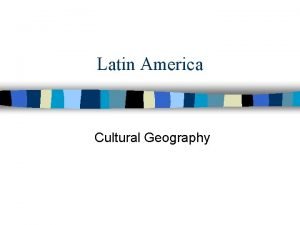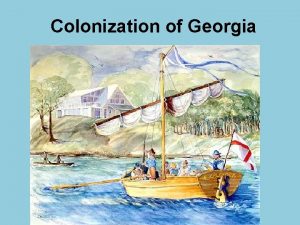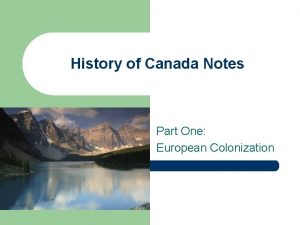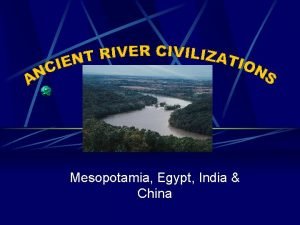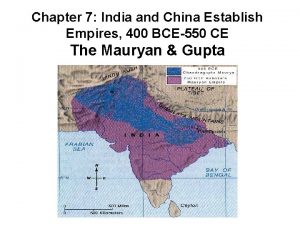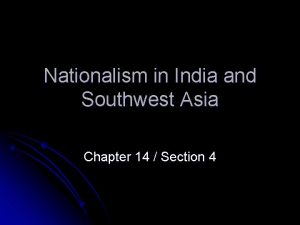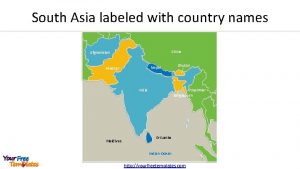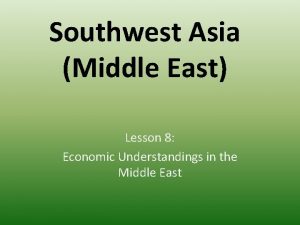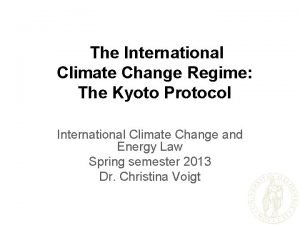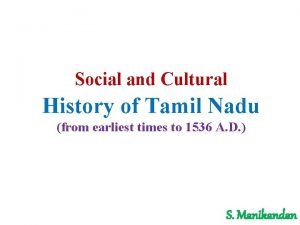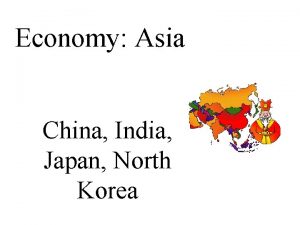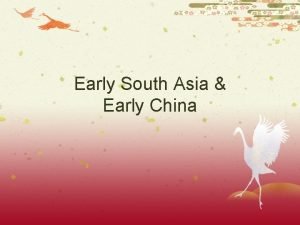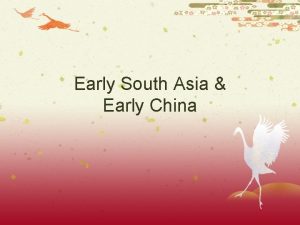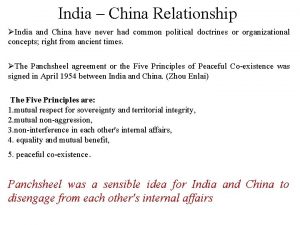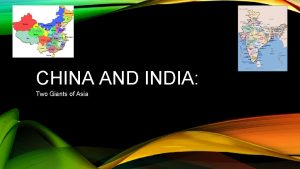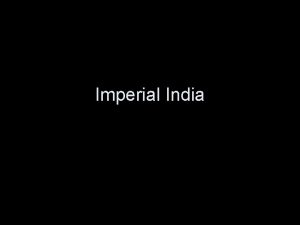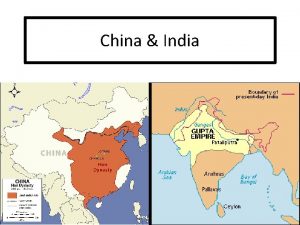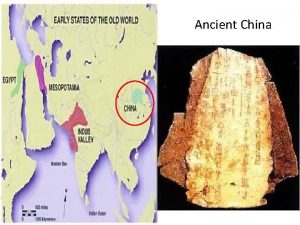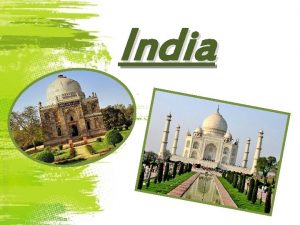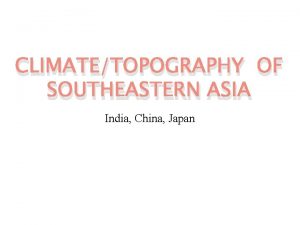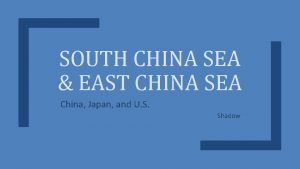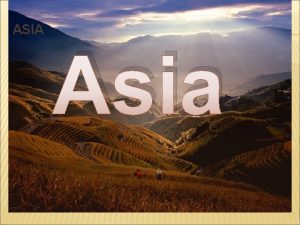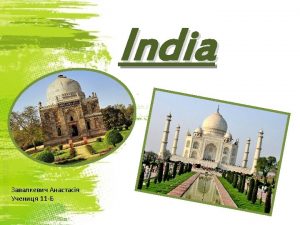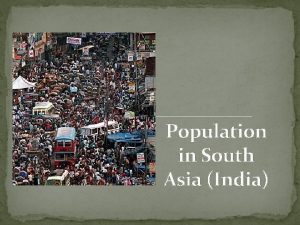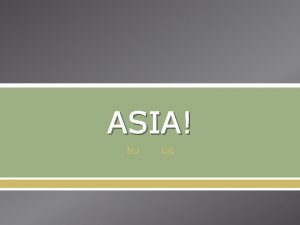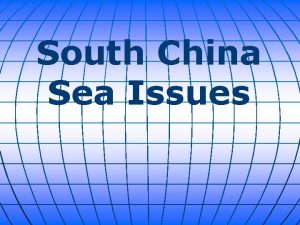South Asia CHINA INDIA AND COLONIZED ASIA Economy























- Slides: 23

South Asia CHINA, INDIA AND COLONIZED ASIA

Economy in the 1800 s Entering the 1800 s, China had the largest economy (as measured by GDP) in the world. Europe was experience a wave of imperialism, and China was the biggest fish.

Who, What, Why?

China in the 1800 s – Foreign Exploitation First flood of European influence came from Christian missionaries. ◦ Their goal was to convert the masses of China to a Christian form of government. 1711, The British East India Company opens their first port in China, in an effort to control trade, restricts foreign trade. By the end of the 1700 s, the British became the Chinese largest trading partner.

British attempts to control Along with your normal goods, textiles, raw materials and food (especially tea), the British began to import Opium to China. It was sold at cheap rates with an effort to get the population of China addicted. Complete first primary source activity. Chinese Trade with Britian.

China attempts to control Opium Complete second primary source activity – Letter to the Queen. Chinese rulers quickly learned of the impact of Opium on China, and attempt to outlaw its import and Sale. British traders ignored these rules, and defied the government to stop them.

The Opium Wars. Britain vs Qing Dynasty First Opium War (1839– 1842) ◦ British Win. Resulting treaty forces Chinese to open more ports for the British Second Opium War (1856– 1860) ◦ More Foreign Powers, support the British, and they defeat the Chinese. ◦ The Result is that china is forced to open several foreign ports, and invite world-wide trade.

The Boxer Rebellion anti-foreign, anti-colonial, and anti-Christian uprising that took place in China between 1899 and 1901. Chinese Fighters, known as “Boxers” began to assault, and kill groups of foreign missionaries throughout China. By 1901, these “Boxer” group had the support of the Qing Dynasty,

Foreign Retaliation American, Austro-Hungarian, British, French, German, Italian, Japanese, and Russian forces joined up to fight against the Boxer Rebellion. Foreign Forces were known for the atrocious and violent reaction to Chinese nationalist. ◦ Troops were known for looting, burning and raping and they traveled along the country side. Foreign Army defeats the Qing Dynasty and the Boxers.

Consequences Chinese forced to pay retribution in Silver to foreign powers. Foreign powers gain foreign control of providences and Qing dynasty was stripped of any power. Highest point of Foreign influence in China.

Revolutions begin With the destruction of the Qing Dynasty, as well as the influx of foreign influence, Chinese citizens were turned into second class citizens. The Chinese economy was in shambles, and a once rich country was being ravaged by foreign trade. Several Revolutionary attempts were made in an attempt to unify the country under a Republic.

Sun Yat Sen Republic forces, led by Sun Yat Sen, removed the Qing Dynasty from power and instituted a Republic form of government. While, they became the official government of China, Warloads maintained control over local regions, and still allowed for massive foreign influence. The Republic couldn’t remove foreign influence, nor could they unite all of the warlords under their power.

India ASIA’S SUB-CONTINENT

British Control Early Trade Routes to China gave the British Control over India. Largest British influence came from the English East Indian Company. Britain had used their control over trade to extort influence over Indian politics. By 1757, Britain had complete control over India. In the 1800’s England used the power of the East Indian Company to annex territory and take direct, military control of areas of India. Outlying Indian Communities used treaties to keep the British out, but allow some Control

Indian Rebellion of 1857 The uncontrolled areas of India fight back and attempt to kick out the English. The Indians lose. England takes complete control of India.

Indian Independence in 1947 Non-violet protest, led by M. Ghandi. Used tactics such as non-compliance, civil disobedience, and economic resistence. • Violent Mutiny against British Imperial Forces. • Used violent attacks to upheave British Forces, wanted the removal of British forces.

Southern Asia COLONIZATION AND EXPANSION BY EUROPE

Germany, France, Britain hold the Berlin Conference. ◦ At this conference they state that “Effective Occupation” is the standard for internal recognition. ◦ This meant that if a European Country brought in their army, ‘controlled’ the locals, and establish a military rule, they would have control of that country.


Japan AN IMPERIAL STRONG HOLD

Japan was an empire • Japan was a Monarchy, was run by the Emperor. • Goal of the 1800 s was to Modernize the Economy. • Hired Western (European) Advisors to bring Japan into Modern Society.

Japan the Empire §Modernization of Japan led to the need to become an Empire, and expand. §There expansion led to several conflicts with the Russians. §This Culminated in the Russo-Japanese War. §This gave them complete control over the Korea Pennisula.

A hint of Democracy • Westernization of the Economy, led to other growths similar to Europe. • Modernization of the Military, led to them being equals with European Powers. • Modern Economy allowed them to compete in a growing World Wide economy. • They had a rise in the call for democracy and had more elections, and more elected leaders. • This call for democracy was short lived as Emperor Hirohito’s reign as Emperor lasted from 1926 -1989
 Rwanda was colonized by which country
Rwanda was colonized by which country What country speaks latin
What country speaks latin Countries that colonized mexico
Countries that colonized mexico When did britain colonize america
When did britain colonize america What percentage of africa was colonized by 1913
What percentage of africa was colonized by 1913 Who colonized georgia
Who colonized georgia Who found canada
Who found canada Athens vs sparta differences
Athens vs sparta differences Comparative development experiences of india and china
Comparative development experiences of india and china Map of mesopotamia egypt india and china
Map of mesopotamia egypt india and china Chapter 7 india and china establish empires
Chapter 7 india and china establish empires Nationalism in india and southwest asia
Nationalism in india and southwest asia Nationalism in india and southwest asia
Nationalism in india and southwest asia Nationalism in india and southwest asia
Nationalism in india and southwest asia Political map of north africa and southwest asia
Political map of north africa and southwest asia South asia map and capitals
South asia map and capitals Asia africa north and south america
Asia africa north and south america Lesson 8 middle east and south asia
Lesson 8 middle east and south asia India china
India china Características políticas de mesopotamia
Características políticas de mesopotamia Ancient india vs ancient china
Ancient india vs ancient china Tang dynasty map
Tang dynasty map China south
China south Gulf of mannar
Gulf of mannar


